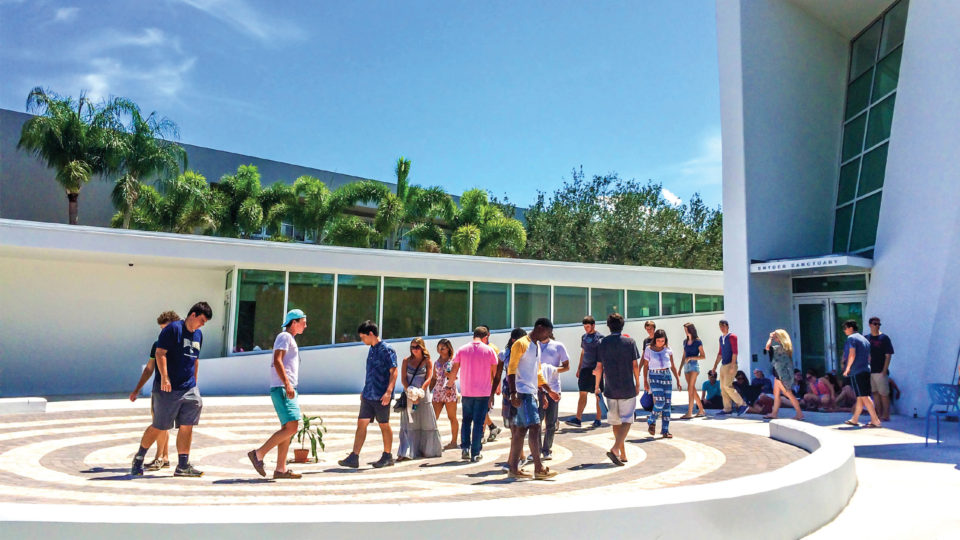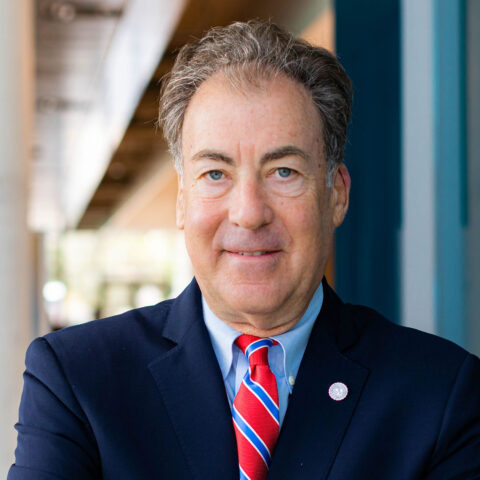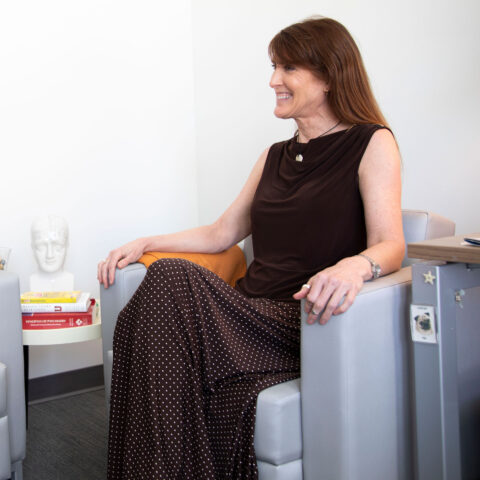Snyder Sanctuary, Lynn University’s newest building, stands in breathtaking contrast against the brilliant blue South Florida sky. Its seven massive, gleaming white walls are at once symbolic and sculptural. Leaning on each other, they represent the interdependence of all living things and create a spiral form repeated throughout nature. It’s an ingenious design for a multi-faith structure at the forefront of an international campus.
“The Snyder Sanctuary provides an inviting space for anyone looking to connect with their spiritual nature, no matter their cultural background,” says Lynn University President Kevin M. Ross. “As a school that has a high percentage of international students and that likes to say ‘All Styles Welcome,’ it’s key that we have a place like this for our community.”
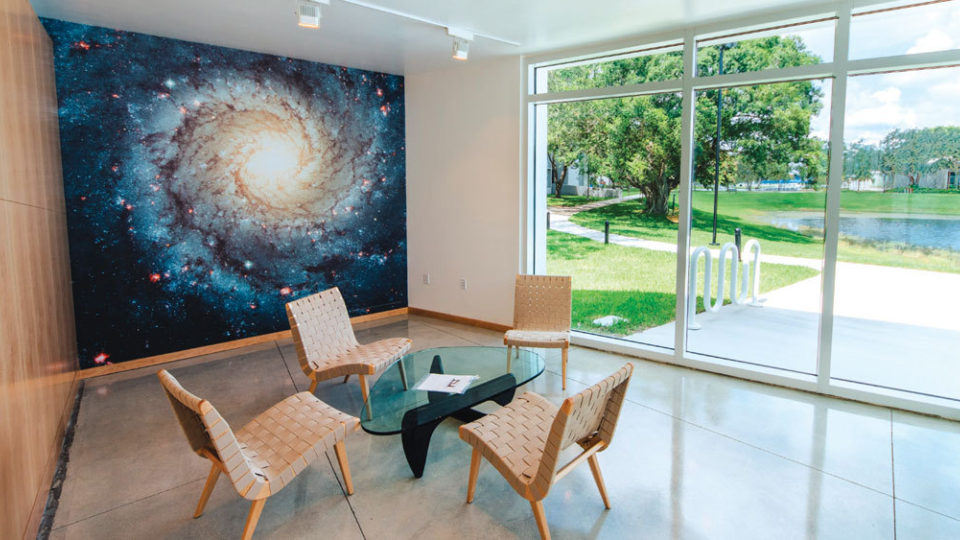
Inspired design

The sanctuary was the idea of Jamie S. and Stephen F. Snyder, lead donors for whom the structure is named. The Snyders are longtime and generous friends of the university, having supported the Snyder Idea Lab in the Mohammed Indimi International Business Center, the Snyder Scholar scholarship, the Keith C. and Elaine Johnson Wold Performing Arts Center and the Conservatory of Music.
Says Stephen Snyder, who is vice chairman of Lynn’s board of trustees, “We intended the sanctuary to be both a place of refuge and a spiritual place that is set apart from the everyday world. It’s a place for meditation, music, celebration and dialogue, unaffiliated with any religion, where students are encouraged to explore different beliefs and shared values.”
Selected to create the sanctuary was noted collaborative design firm Newman Architects. Founder and project lead Herbert S. Newman designed two other Lynn University signature buildings, the Keith C. and Elaine Johnson Wold Performing Arts Center and the Eugene M. and Christine E. Lynn Library.
“Every culture, every civilization of which we are aware has not necessarily an organized religion, but a belief system that reflects a belief in our ultimately spiritual nature,” says Newman. “We thought about how to reflect this reality and use it to bring people of all cultures together.”
Symbolic elements
At the sanctuary’s entrance is a labyrinth, an ancient pattern found in cultures around the world and used to quiet the mind, find balance and encourage meditation and insight. The labyrinth, like the sanctuary’s walls, reflects nature’s spiral forms. To walk a labyrinth is to follow a curved path to its center, which returns you to its entrance. Walking the path in and out can develop a sense of empowerment, spiritual insight and a new connection to yourself.
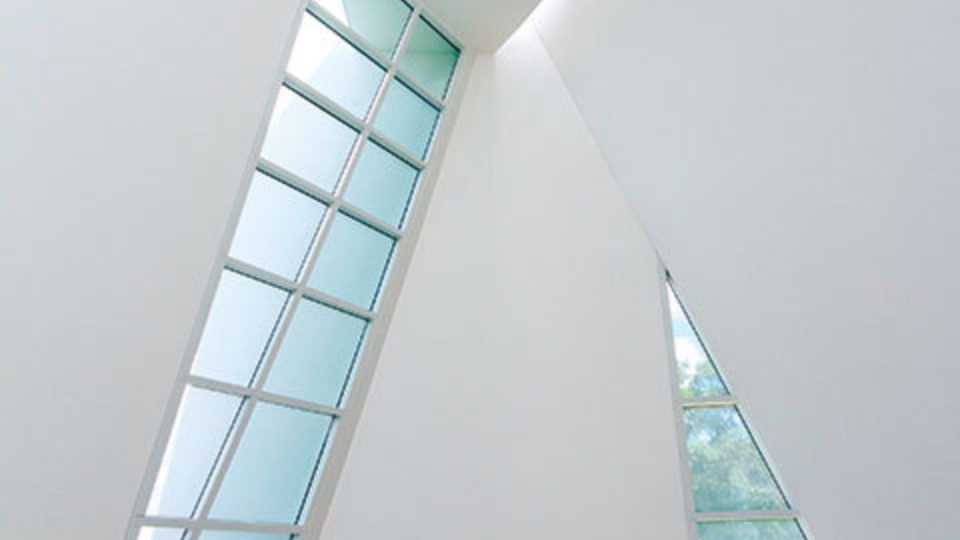
The sanctuary’s walls, rising to 50 feet, are a marvel of engineering. Facing different directions and leaning on each other, the walls are a metaphor for how we as individuals need to rely on one another for support.
The concept of interdependence is an important one to convey to university students, according to Newman. “For the first time in their lives, they are out of the nest and on their own in college,” he says. “The students are the same age, but often separated by their various backgrounds, and therefore a place where they can come and look into the eyes of other people and share a spiritual experience is a very special thing.”
The sanctuary’s 1,700-square-foot interior is designed expressly for that purpose. It accommodates seating for up to 140 people to gather for lectures, discussions, Conservatory of Music recitals and chamber music performances, and weddings and memorial services for members of the university community. Overhead, skylights allow ever-changing patterns of natural light to stream in. Triangular glass windows, translucent at the ground level to focus visitors’ attention within the space, become more transparent as they rise, permitting views of the trees and sky.
An adjacent 2,000-square-foot wing comprises a lobby, lounge, preparatory room and state-of-the-art classroom. Here, up to 20 students can attend classes in Belief and Reason, one of three themes in Lynn’s Dialogues core curriculum. In addition to being exposed to religious texts like the Bible, Torah and Koran, Belief and Reason students also study works by Aristotle, Leonardo da Vinci, Martin Luther King Jr. and John Locke.
For all faiths, always
In keeping with the Snyders’ vision, the sanctuary will always be for people of all faiths, never favoring one creed over another. A governing body will ensure this guiding principle is followed.
As the Snyders state in one of three eloquent descriptions on the wing’s maple-lined walls: “The Snyder Sanctuary extends a warm welcome to all.”
About the Snyder Sanctuary
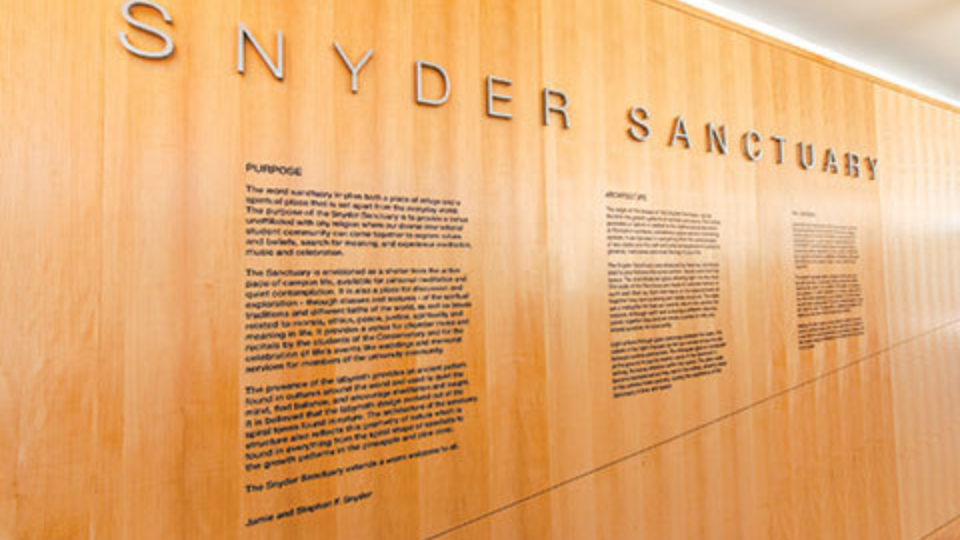
Donors: Jamie S. and Stephen F. Snyder, vice chairman of Lynn University’s board of trustees
Design firm: Newman Architects, New Haven, Connecticut
Groundbreaking: March 28, 2014
Dedication: Nov. 12, 2015
Square footage: 3,700
Height: 50 feet
